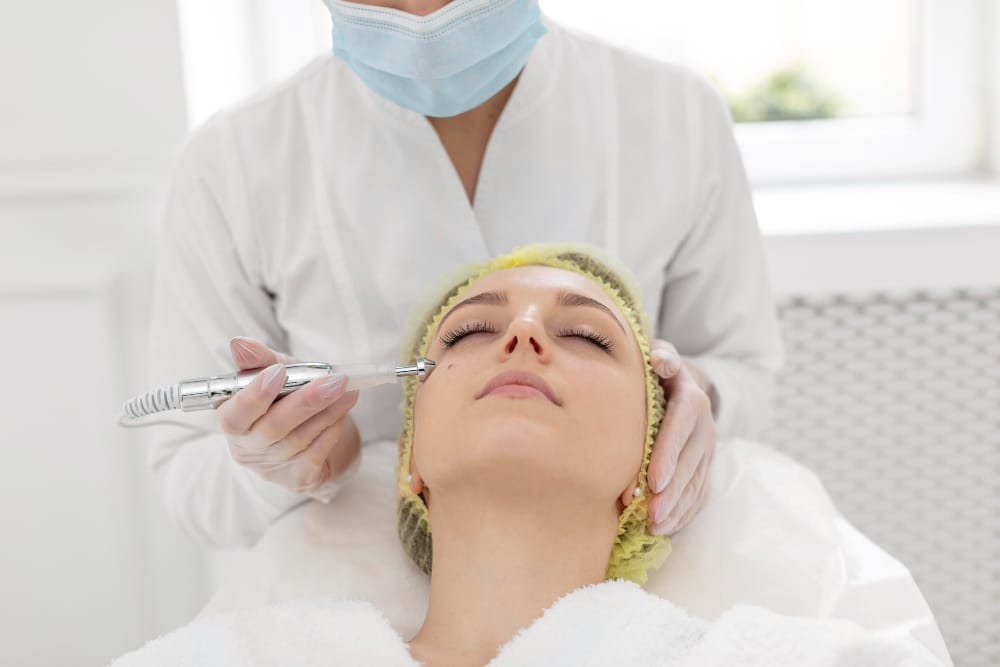
As we age, our faces undergo natural changes such as the loss of subcutaneous fat, hyaluronic acid (HA), collagen, and elastin. This results in decreased facial volume and the formation of wrinkles and furrows due to repeated movements and reduced moisture.
Dermal fillers are biocompatible substances that, when injected into the dermis or subcutaneous tissue, seamlessly integrate with surrounding tissues. They augment HA levels, immediately boosting skin hydration. By attracting and binding water molecules, dermal fillers temporarily add volume, filling in depressions like scars and areas affected by fat loss.
Bellafill, previously known as Artefill, is an FDA-approved permanent dermal filler composed of Polymethylmethacrylate (PMMA) microspheres. It is designed to address nasolabial folds, acne scars, and forehead furrows. Permanent fillers like Bellafill are suitable for patients seeking extended results after prior experience with temporary fillers.
Dermal fillers and other cosmetic products like Botox are injected at varying depths depending on their viscosity and the treatment area. It is crucial to exercise caution, especially in thin-skinned facial regions like glabellar lines and the vermilion border of the lips, as these areas are susceptible to vascular occlusion and necrosis. Here are some common injection techniques employed by doctors:
Dermal fillers utilize a variety of naturally sourced and synthetic compounds, each offering distinct advantages and considerations in clinical practice:
| Ingredients | Description | Products | Strengths | Weaknesses |
| Hyaluronic Acid (HA) | Naturally occurring sugar molecule found in the skin. | Juvederm, Restylane, BELOTERO® BALANCE | – No skin testing required<br>- Versatile<br>- Reversible<br>- Immediate effect | – Not suitable for large volume restoration |
| Calcium Hydroxyapatite | Natural substance found in bones and teeth. | Radiesse | – Suitable for structural lift<br>- Long-lasting<br>- Immediate effect<br>- Stimulates collagen | – Superficial injection can cause nodules<br>- Not suitable for lips |
| Poly-L-lactic Acid (PLLA) | Biocompatible synthetic polymer. | Sculptra | – Long duration<br>- Suitable for large volume restoration | – Requires mixing<br>- Not suitable for lip injection<br>- Delayed, inconsistent effect |
| Polymethylmethacrylate (PMMA) spheres + Collagen | Biocompatible synthetic material with added collagen. | Artefill (Bellafill) | – Permanent<br>- Provides immediate correction | – Requires skin testing<br>- Not suitable for lips<br>- Permanent side effects |
Top dermal filler brands include:
These fillers offer various benefits but also have specific limitations and potential side effects, emphasizing the importance of careful product selection and patient assessment in achieving optimal outcomes.
Side effects of dermal fillers are a primary concern in cosmetic procedures. These adverse reactions can arise from the procedure itself and the expertise of the administering physician. Fortunately, severe or delayed reactions are uncommon.
Possible adverse reactions to soft-tissue fillers can vary in severity and onset. Immediate reactions, though more common, are typically transient and may include redness, swelling, itching, bruising, and lump formation at the injection site.
Subacute reactions such as abscess formation and persistent hypersensitivity reactions are rare but possible. Delayed reactions, also rare, can manifest as discoloration, local necrosis, nodule formation, granuloma formation, or ulceration. Monitoring for these reactions post-procedure is crucial for prompt intervention if needed, although severe complications are uncommon.
There are several techniques available for injecting soft-tissue fillers, each chosen based on the specific product and treatment area. Physicians typically select from three correction types based on the amount of filler used:
The cost of dermal filler treatments ranges from $500 to $1,200 per injection, depending on the treated area and desired outcomes. Before the procedure, patients receive counseling on filler details, expected results, potential side effects, and contraindications.
They must provide written consent and a comprehensive medical history. Blood thinners, vitamin E, warfarin, and other anticoagulants should be avoided beforehand. Mild redness or swelling may occur for a day or two post-procedure.
Patients can resume normal activities immediately but should avoid strenuous exercise and prolonged sun exposure. The duration of filler effects varies: temporary fillers last 3-6 months, semi-permanent fillers 9-12 months, and permanent fillers more than 2 years.
Navigating the diverse array of dermal fillers available today can be daunting. Understanding the distinctions and approved uses of each filler type is essential.
Successful outcomes hinge on meticulous product selection, precise injection techniques, and the expertise of a qualified practitioner. Temporary fillers are often preferred for their gradual absorption by surrounding tissues, offering flexibility and tailored solutions for various cosmetic needs.
Join our newsletter to receive latest news and offers

Medicle MD Ltd
Reg. Number: 14317237
Address: 27 Old Gloucester Street,
WC1N 3AX London,
United Kingdom